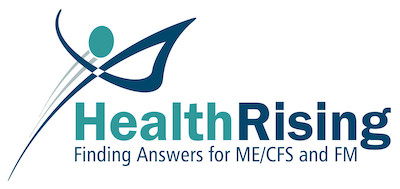“We are on the brink of an explosion of scientific progress.”
In the last blog we focused on Dr. Lucinda Bateman’s belief that Chronic Fatigue Syndrome is finally beginning to reveal its secrets. She feels like the big picture–i.e., the cause of this disease–is finally emerging in a disease that has defied understanding for so many years. ME/CFS has not been solved, by any means, but after years of work in the field, she’s excited by what she sees.
In this talk, which took place a couple of months later, Dr. Bateman relays the same optimism, but focuses on immense and unfulfilled needs of the ME/CFS and FM populations, proposes why it’s happened, and at the end asserts that OFFER–a new and bigger OFFER–is going to be part of the solution.
Are ME/CFS and FM Real and Important?
“They are diagnosable but not often diagnosed. …They are treatable but not often treated with skill by physicians.”
Only about one out of a thousand kids gets ME/CFS or FM, but that still makes these disorders the main cause of extended school absence in adolescents. Kids, she noted, are generally very healthy; it takes a major illness to keep them out of school.
Both ME/CFS and FM are much more common in adults (1 out of 200 and 2 out of 100 respectively); added together, these disorders affect up to a six million people in the U.S. That’s 75,000 adults with ME/CFS and/or FM in the sparsely populated state of Utah, and Dr. Bateman believes these estimates are probably low-ball figures. By any standard, these disorders constitute a major health problem.
Very few physicians in the Utah healthcare system, however, are familiar with the current research in Fibromyalgia and Chronic Fatigue Syndrome. Good physicians are out there trying to keep up with FM and ME/CFS – many because of Dr. Bateman’s outreach, I would guess – but no (other) physicians have declared themselves specialists in either disease. This is despite a potential client base of 75,000 people.
Dr. Bateman gave one reason why this may be true when she alluded to her own “low budget” clinic and the “financially fragile bare-bones” business plan that enables her to stay open. Her staff, she noted, works for “very low pay” and receives no medical benefits because she can’t afford to give them any.
Seeing her sister struggle with her own severe case of ME/CFS prompted Dr. Bateman to go into the field, but other doctors that don’t have that kind personal connection aren’t going to make the financial sacrifices she’s made. ME/CFS and FM have to pay before doctors will enter the field.
Something is clearly awry, when the sole ME/CFS and FM clinic in Utah, which is in great demand and can see only 10 to 15 percent of the patients who would like to get in, is “financially fragile”.
“I decided I was not going to rest until I figured this illness out,” said Dr. Bateman when speaking of her sister’s struggles with ME/CFS.
(Nor is it working across the country at Johns Hopkins. Dr. Peter Rowe, at Johns Hopkins, is overwhelmed with patient requests and sees a similar percentage of prospective patients, yet Johns Hopkins has not acceded to requests to enlarge the clinic. Providing lucrative services and maximizing profits is apparently a key part of Johns Hopkin business plan; helping people in need is not. ME/CFS practitioners need not apply. Fitting ME/CFS and FM practitioners into the traditional medical system has not been easy.
The scale of the unmet need in Utah, a small state that has an ME/CFS and FM expert, is staggering. Of the 75,000 sufferers in the state, Dr. Bateman has seen 1500 over a period of ten years, leaving 73,500 who have had to deal with their ME/CFS or FM without seeing an in-state specialist.
A Busy Physician, Educator and Advocate
Dr. Bateman realized some time ago that she can’t do it alone – that she needs partners – so she’s taken time away from her practice to network and educate other physicians both locally and nationally. Serving on the boards of the CFIDS Association (now Solve ME/CFS Association), the IACFS/ME Association, and on the federal advisory committee for CFS (CFSAC), she’s been one of our most proactive advocates. She’s contributed to training videos for the CDC. She’s serving on the IOM committee for the Clinical Definition.
OFFER, the non-profit foundation Dr. Bateman is associated with, has done its part in the education effort with its conferences and many videotaped presentations freely available on the web. This is probably the most under-utilized ME/CFS/FM resource on YouTube.
In other words she’s spread pretty thin… too thin to do all that and even begin to care for the huge ME/CFS and FM population in Utah.
Something’s clearly not working in a medical system that allows so many ill people to go untreated. But what is it? Dr. Bateman had some ideas.
How Two Relatively Common Disorders Got Marginalized

Systemic problems with our medical system have left most ME/CFS and FM patients without access to good medical care.
How did ME/CFS and FM get so marginalized? Calling the marginalization unintentional, Dr. Bateman listed several systemic factors in our health care system that have worked against people with these types of disorders.
- A system that has shifted its emphasis from treating patients to saving money (or is it making money?)
- A system that places more priority on illnesses that may kill people.
- A system which values short appointments with doctors.
- An infatuation with technology that leaves doctors to question whether an ME/CFS or FM patient is sick if nothing shows up during testing.
- A system that does not work well with complex illnesses that don’t fit into a specialty yet, but that are often too complex to care for by primary care physicians. Fibromyalgia, she noted, which usually lands in rheumatology, is not a rheumatological illness; half the rheumatologists don’t want to treat FM patients.
- The emphasis on evidence-based medicine in medical schools, which requires rigorous studies before a treatment can be included in medical school curricula, means most successful ME/CFS and FM treatments do not get taught.
Treatment Holes in ME/CFS and FM (19:30)
The treatment holes in these disorders occur in precisely those areas where current medicine is weak.
Viruses are at the top of the list; medicine, Dr. Bateman said, doesn’t know a lot of about viruses and doesn’t spend much money learning about them. They’re difficult to study and few drugs are available to combat them. The immune system and autoimmunity is another area, but the least well understood area is the nervous system, particularly the autonomic nerve system and the brain. Then there are genetics, epigenetics, etc. All these fields are important to ME/CFS and FM, and all need a lot more work.
Progress is Being Made
Progress is being made, though. The three FDA approved drugs greatly increased FM awareness in doctors — even if the treatments are not particularly potent – and better options are needed. Calling Fibromyalgia “fairly treatable”, Dr. Bateman noted that the worse a patient’s FM is – the more debilitated they are – the closer they come to meeting the criteria for Chronic Fatigue Syndrome (and the harder they are to treat).
Dr. Bateman emphasized that they she does not, however, view these illnesses as separate entities, but as disorders that occur across a spectrum of illness.
What separate tracks they’ve run on thus far, though! FM and ME/CFS researchers rarely work together. After receiving the attention of drug researchers, Fibromyalgia has three FDA-approved drugs (but actually receives less federal funding per patient than ME/CFS).
Chronic Fatigue Syndrome has had little interest from drug companies, but has a much stronger foothold in the federal government. It has a federal advisory panel, a Trans-NIH Working Group, a CDC research group, and a grant review panel (at least in name). It was the first illness to participate in the FDA Stakeholder Meetings. ME/CFS advocates have produced a foundation for progress in the federal government that has not produced many results over time, but over the past five years Dr. Bateman suggested the work may be beginning to pay off.
Seeds of Hope Emerging
The Feds Make Steps
Dr. Bateman credited the WPI’s XMRV finding for accelerating interest in ME/CFS dramatically. Since that occurred we’ve had the State of the Knowledge conference, the Social Security Administration put out a new ruling on ME/CFS, the CDC’s 500 person multi-center study is underway, and there is the IOM contract for a clinical definition. With the IOM contract the Department of Health and Human Services (DHHS) actually put money towards a major CFSAC recommendation.
The CDC’s huge multi-center study will provide evidenced-based data that no one will be able to ignore. It will, Dr. Bateman predicted, be a major step forward for this disorder. Among other things it will validate how serious this illness is and how difficult it is for patients to function with it. The first papers should be coming out soon.
Private Interest Up
There’s been a huge increase in interest on the private end as well in the past five years. Dr. Montoya’s center at Stanford, the Simmaron Research Foundation, the Chronic Fatigue Initiative, the Open Medicine Institute, Dr. Klimas’s Institute for NeuroImmune Medicine at Nova Southeastern University, Dr. Enlander’s Mt. Sinai Research Institute, Dr. Ron Davis’s new Stanford Research Foundation, the NCNED in Australia have all popped up since around that time.
Research Expertise Way Up
The level of research expertise aimed at ME/CFS is much, much higher than in the past. From Lasker winner Dr. Houghton at the SolveCFS Foundation (formerly CFIDS Association) who believes he may have found a biomarker, to Dr. Lipkin and Dr. Hornig at the CFI, to Dr. Schadt at the Mt. Sinai group, to to the Fluge/Mella group in Norway, to Dr. Davis and other Stanford researchers now engaged in this disorder – the sheer amount of brainpower that devoted to this illness is magnitudes higher than it was pre-XMRV.
This is not to say that major difficulties in funding don’t dog ME/CFS researchers; ME/CFS research hasn’t turned the corner in that critical area yet, but the foundations for progress are being laid.
The Center of Excellence Saga – Seeds That Didn’t Make it
Still, the federal government has been remarkably unsupportive overall. Dr. Bateman ticked off federal advisory committee (CFSAC) recommendations for Centers of Excellence (COE) for ME/CFS from 2004-2010.
Research, provider education, and treatment all converge together in a COE to produce an environment that can quickly translate research findings into treatment options – and get the word out to doctors. They are a powerful means of making advances in a field. They’re not particularly expensive; at about $1.5 million a year each, five centers would cost $7.5 million yearly. If every Institute in the Trans-NIH Working Group for ME/CFS ponied up, that would be about $500,000/year each – small potatoes for Institutes with budgets running into the hundreds of millions and often billion dollar plus annual budgets.
It’s hard to imagine any disorders or patient populations more in need of COEs than the ME/CFS and FM populations, but the Institutes have dug in their heels. It is not for a lack of trying from advocates.
CFSAC Recommendations for Centers of Excellence
-
2004 – CFSAC -requested five regional Centers of Excellence; 1.5 million/year per COE
- 2005 – same
- 2006 – no
- 2007 – Included with this request was a document explaining why COEs are needed, the huge need, the high economic costs of the disorder, the complete lack of clinical/research centers, the need to treat and identify treatments rigorously in an organized manner and get them out to other physicians.
- 2009 – asked twice for COE’s
- 2010 – since the feds were unwilling to fund COEs, they were asked to fund ways to network between clinics and develop a national clinical and research network.
All requests were rejected.
Growing Seeds
The COE saga at the NIH is an ugly thing. The NIH has been unwilling to provide even the most basic support for the millions of people afflicted with these diseases, but private support has been strong. No group has provided more support recently than the Hutchins Foundation.
The Hutchins Family Foundation ponied up $10 million to form the Chronic Fatigue Initiative a couple of years ago. What we (or I) didn’t know but guessed at, and which Dr. Bateman confirmed, is that a member of the family has ME/CFS. They’re engaged in multiple projects, and they’ve got samples from 200 patients in their biobank. They’ve employed top researchers, and the papers – which will make waves – are going to start coming out.
(The pathogen study was a straight shot at getting at a cause in this illness. Some physicians and researchers, however, believe the techniques used would not uncover the kind of herpesvirus infections present in ME/CFS. The idea that the study to end all pathogen studies (we thought) might be flawed in this central area is unfortunate, to put it mildly. Dr. Lipkin, for all his expertise and fame, is not an ME/CFS researcher. Something was definitely gained by getting a researcher of his status involved, but was something lost as well? Or are the dissenting physicians/researchers wrong? (This is all added by me – none of it is from Dr. Bateman))
The Lipkin/Hornig study examining immune factors did uncover some abnormalities and we should be seeing those results soon.
(Epidemiological study – Epidemiological studies focus on who has what, what works, what doesn’t work, etc., but don’t get at cause. They can, however illuminate subsets – an important aspect in ME/CFS – and are powerful educational tools. Hopefully the fact the CFI threw a lot of money at the epidemiological study means they’re setting the foundation for a long-term run at this disease. The results of this study should be out soon as well.)
The CFI’s side-epidemiological study determining what happened to 1,000 (yes, 1,000) long-term ME/CFS patients should be published soon. The findings will be fascinating and important. That fact that over 90% of the people reached on the phone still had Chronic Fatigue Syndrome says something both striking and important about this illness. The papers that come out of this ‘side-study’ are going to get some media attention and open some eyes.
Research Seeds
“Studies like these are going to change everything – right away.” Dr. Bateman on the small nerve fiber studies
Dr. Bateman then reviewed three studies which demonstrated how quickly the field is changing.
Autoimmune Cause for Postural Orthostatic Tachycardia Syndrome (POTS) Found
She reviewed an email she’d just received from a patient whose son is starting to have problems. An athlete, he had started suffering fatigue after his runs. His treadmill test was fine except that his heart rate exceeded 200 bpm and he was feeling so faint they had to stop the test. What did his cardiologist do? He sent him back to his primary care doctor.
Dr. Bateman noted that just this year a paper suggested a cause to the young man’s problem. He clearly had postural orthostatic tachycardia syndrome (POTS) and the cardiologist clearly had no idea what that was. That paper, by the way, was published in the prestigious Journal of the American Heart Association – a journal one might have thought the cardiologist would regularly read.
The paper suggested an autoimmune process was stopping blood vessel constriction and kicking off a furious heart rate that was leaving POTS patients’ brains without adequate blood when they stand. Dr. Bateman noted that hearts beating that rapidly have no time to fill, and therefore they pump out too little blood, and that’s why POTS patients get dizzy when they stand.
Small Fiber Neuropathy Studies Open New Window into Fibromyalgia (and perhaps ME/CFS)
Dr. Bateman also cited the small fiber neuropathy (SFN) Fibromyalgia studies, one of which also found evidence of high rates of autoimmunity, as another example of how the field is moving forward. The symptoms of SFN, she noted, are very similar to those of FM, but since neurologists generally do not perform the skin biopsies needed to diagnose SFN, they rarely find anything wrong. (Back to the primary care provider the patient goes).
The findings, which have been validated by several small studies, will, however, change how FM is viewed and treated. They’re blockbuster findings in FM.
Japanese Neuroinflammation Study Finds Activated Microglia in Chronic Fatigue Syndrome
This small study, which found inflammation in the brain stem and the brain, could explain many symptoms in ME/CFS. (Even though the study was small and by Japanese researchers, upon being published it made it into the mainstream media. A bigger study is underway. )
- See the Mystery No Longer: Big Picture Emerging in ME/CFS for Dr. Bateman’s thoughts on neuroinflammation.
- See Neuroinflammation: Putting the ‘itis’ back into Myalgic Encephalomyelitis – Back to the Future For Chronic Fatigue Syndrome? – for more on the Japanese study.
On the Brink?
“We have so many answers hovering out there.” – Dr. Bateman
These findings are going to change the field rapidly, Dr. Bateman believes. When she says we are on the brink of an explosion of scientific progress, she’s not the only one that feels that way. Dr. Mady Hornig believes ME/CFS is about to go through the same kind of explosion of interest and funding that she saw autism go through. She stood up at the IACFS/ME conference and said she looked forward to that conference being given every year instead of every two years in the near future.
Huge Need Present on the Ground
That’s encouraging, but Dr. Bateman kept circling back to the big need on the ground: producing ME/CFS/FM Centers where people can get treated by doctors who are up on the latest findings. She noted that Dr. Montoya’s Stanford Clinic has a four year waiting list. She and Dr. Rowe see only ten percent of the patients that want to see them. OFFER is committed to filling the gap in Utah.
OFFER’S BIG MOVE – Building an ME/CFS and FM Center of Excellence
“We can’t be turtles anymore – we need to be bears.”
If the NIH won’t build a Center of Excellence, OFFER will. It’s a big jump, a daring move in a field that isn’t known for its daring moves. They’ll need to raise one to two million dollars just to get started.
Their timing might just be right, though. If the seeds of hope Dr. Bateman mentioned grow, this field is going to get busy. Facilities will be needed to fill the demand for research studies and clinical trials. Dr. Bateman and her little clinic wouldn’t be able to meet that demand, but a COE would.
Limited Capacity Means Limited Progress
That limited capacity has really held things back. Dr. Bateman and the Lights at the Univ. of Utah, for instance, are jazzed about the small fiber neuropathy findings and would love to do a small fiber neuropathy study, but they don’t have the time, they don’t have the resources, and they don’t have the funding.
Dr. Bateman and Seeds of Hope
(One wonders: is anybody is doing an SFN study in ME/CFS? Despite the fact that the research calls out for one, that it shouldn’t be expensive, and that it could be a difference-maker in how this disease is understood and treated — despite all that – my guess is that nobody is studying SFN in ME/CFS.
The capacity, the Centers that can jump on those results quickly and efficiently, simply isn’t there. Why do we only have one other Rituximab trial on the boards (not started) several years after Fluge/Mella’s study? It’s lack of capacity and funding.
If Dr. Bateman’s COE was a reality right now, we’d have a study showing how many people with ME/CFS have small fiber neuropathy. SFN is not rocket science. It’s an easy test and in any other field it probably would have been done by now. Want to speed up your possibility of a cure? Support getting COEs established.
How many Centers – dedicated spaces that can do research, clinical trials and treatment on a relatively large scale – are there in ME/CFS right now? My guess is that there’s probably one in the US – Dr. Klimas’ NSU center. The WPI with Dr. De Meirleir may be another. The NCNED in Australia is another. That might be it.)
Boom Coming? Everyone Ready?
“We can’t be turtles anymore – we need to be bears.”
I think the research boom is going to happen. It won’t come overnight, and it won’t come as fast as we might want, but I think it’s coming. I think the IOM and P2P contracts, as unsettling as the process has been, are a sign the Feds are getting more engaged. I think the recommendations from both will spur more funding.
I think we have multiple research possibilities, any one of which will help this field take off. One wonders what the Pridgen clinical trial alone will do to the Fibromyalgia field. The quality of our researchers is an order of magnitude better than it was five years ago. ME/CFS and FM are growing up – and as they do we need, as Dr. Bateman put it, to be bears – not turtles.
Dr. Bateman, with her experience, her reputation as a superb diagnostician, and her many connections on the clinical, research, and government levels, is superbly placed to be at the very heart of things when this field takes off. If the Feds ever do fund Centers of Excellence it would be shocking if she and Dr. Klimas weren’t the first recipients. They’ve put in the time and accomplished so much on so many different levels.
Others come to mind: Dr. Montoya at Stanford, Dr. Peterson at Simmaron Research Foundation, and Dr. Kogelnik at the OMI have all built foundations for future success. Dr. Peterson saw an opportunity when the federal XMRV study enabled him to insert himself (and later the Simmaron Foundation) into scientific research at the highest level. He built himself and the Simmaron Research Foundation into trusted partners and now they’re engaged in a variety of research.
Dr. Kogelnik jumped on the CDC’s grant opportunity so quickly that it made some researchers head’s spin. Now the OMI has its network of doctors engaged in one of the most potentially significant ME/CFS studies ever. The SolveCFS Initiative (formerly CFIDS Association of America) with it’s patient registry and biobank and its interest in gathering big data is well placed to take advantage of future progress.
Ironically the organization that created the opening for a lot of this activity, the WPI, is still, as Dr. Bateman noted, in recovery mode. Bridges that were burned in the Miklovits era need to be rebuilt, but WPI is engaged in some exciting research, has a superb facility, a prominent medical director, and will be back. When this field does ‘explode’ WPI has built a resource that should figure prominently in it.
The Shauna Bateman Center of Excellence
“We need to build a clinic that can see EVERYONE that calls, not just ten percent of those that do.”
Now it’s OFFER’s turn. They propose to build a Center of Excellence that can server the ME/CFS and FM sufferers in Utah. That can quickly jump on hot research findings. That can translate research into treatment options.
OFFER’s big jump proposes to transform them from a small, financially struggling clinic into large, financially stable center for ME/CFS and FM research and treatment. That’s a big jump, but with the field expanding it’s a possible and even necessary jump.
The Shauna Bateman Center of Excellence has a nice ring to it. It’s a fitting tribute to Dr. Bateman’s sister and everyone who has suffered through the mediocre care and rejection that’s typified treatment for so many.
It’s not just OFFER. All of us, Dr. Bateman asserted, need to make a big shift in what we consider is possible, in what we’re committed to. It’s time to be bears, to not let the resigned attitudes of the past determine our future, but to be committed to an effective and brighter future – and to produce it.
OFFER is stepping out…
















Cort — When you say, “Now the OMI has its network of doctors engaged in one of the most potentially significant ME/CFS studies ever,” what study are you referring to?
The CDC study…Not because it’s going to determine the cause of ME/CFS but because I think – I hope – it’s going to open up a lot of eyes on ME/CFS and build the foundation for more funding.
Fascinating (as always), Cort – thanks for this.
BTW, there are two Rituximab studies in the pipeline – another by Fluge & Mella in Norway and a UK one (about to do a pre-trial study and with the full trial close to fully funded).
I think that she is a little to optimistic. She thinks she knows what causes our symptoms but nobody will follow her interpetations or speculations. There wil never be a breakthrough for this disease because they will never find it.
What??
‘they will never find it’. Do you know something that the rest of us don’t know?
I have been there at your depths of despair, think most of us have, and probably will visit again. Then you get over it, and I always think to myself, there is always someone else worse off than me. Please have hope!
“(One wonders: is anybody is doing an SFN study in ME/CFS? Despite the fact that the research calls out for one, that it shouldn’t be expensive, and that it could be a difference-maker in how this disease is understood and treated — despite all that – my guess is that nobody is studying SFN in ME/CFS.”
I agree. It strikes me as a no-brainer given frequent diffuse widespread pain and overwhelming evidence of autonomic dysfunction and possibly autonomic neuropathy which is taken pretty seriously in diabetes :
“Clinical manifestations of CAN” (Cardiovascular autonomic neuropathy) “are pleomorphic and appear in late stages, and in isolation do not present enough sensitivity and specificity for diagnosis requiring the use of objective autonomic tests (3, 4). Thus, detection of CAN in a diabetic patient requires sensitive and specific tests in order to establish differential diagnosis and quantify the severity of dysautonomia (3). Specifically, the presence of symptoms or signs suggestive of autonomic changes – such as erectile dysfunction, dizziness, intermittent visual impairment, postprandial hypotension, resting tachycardia, or exercise intolerance (dyspnea) in persons with DM – should be investigated and confirmed by performing objective diagnostic tests for CAN (3, 4).”
http://www.ncbi.nlm.nih.gov/pmc/articles/PMC3822331/
Reduced HRV seems to be a key measure which makes we wonder why such findings in ME/CFS patients don’t appear to be interpreted as ‘a big deal’?
Interesting Marco. For some reason I hadn’t connected SFN with heart rate problems. I am actually seeing a cardiologist later this week regarding my reduced HR so the article you referenced was good to read. Thanks.
Agreed – and what really stands out for me in that subset of diabetic patients is ‘exercise intolerance’
And, it is curious that the USA is not interested in funding studies when they certainly have access to the numbers of people who are receiving disability social security or who had been before their deaths due to CFS ME FIBROMYALGIA. What a great country . We need a campaign of some sort to raise awareness and a real name since fatigue is a joke……why would anyone fund a fatigue study. 30 years and this is where we are….put us all in a concentration camp to get the real picture of the abuse and insanity.
Great to hear that the Japanese scientists who discovered the inflammation with the pet scans are continuing their research. If the US doesn’t step up to the funding plate, maybe Japan will – or the other countries mentioned here.
Today I have lost ‘HOPE’
Thank you Cort for continuing to keep us in the loop. I am so grateful to Dr. Bateman, Dr. Klimas, and others for fighting this battle with us and for us when we sometimes lose hope. If they refuse to toss in the towel and give up after all they’ve been through and are still determined to continue the fight, it inspires me to do the same. They have been nothing less than heroic in their determination to conquer this disease. God bless them and please keep them healthy!
They have really….You’ve got to be built of strong stuff to take on ME/CFS – particularly when doctors like Dr. Bateman did, and reaching much further back when Dr. Peterson and others did. They’re pioneers! We all are really.
I agree, Pat!
Many thanks to Cort for these excellent blogs and a million thanks to the pioneer clinicians and researchers working so hard for us in such a tough field.
I am grateful to have this tireless warrior as my daughter’s ME specialist.
Is Dr Bateman familiar with histamine intolerance from foods high in histamines? Low DAO enzyme in people with this condition that the Medical community as a whole does not even know this condition exists!! Numerous patients now diagnosed with this treatable condition from low intake foods and anti histamine type medicines and natural ones as well 🙂 Something she should move forward on in elimination in her sister and patients as well 🙂
Blood test is available in certain Private labs but nowhere to be found in hospitals or Government labs 🙂
What blood tests are you referring to?
I agree there could be issues with histamine intolerance. Whether or not it’s from DAO issues or MCAS ( mast cell activation syndrome). Addressing this also addresses the immune system. Treating this has been one of my best helps many of us HyperPOTS people have seen this as a turning point in our treatment.
I agree there could be issues with histamine intolerance. Whether or not it’s from DAO issues or MCAS ( mast cell activation syndrome). Addressing this also addresses the immune system. Treating this has been one of my best helps, many of us HyperPOTS people have seen this as a turning point in our treatment.
I think only a very few know of this in ME/CFS.
Mast cell activation is manifest in so many ways. Its much more than just a histamine problem. Its not a true allergy. It can be triggered very unexpectedly by something that could have not been a problem yesterday. However, most have a pretty good knowledge what will cause a mast cell degranulation. And, there are certain things that will almost always cause a problem. It can be food related, emotion triggered and can be caused with exercise. It can have many physical manifestations, the extreme being full out anaphylaxis. It could be flushing, hot flashes, rashes and even unexplained emotions like anger or anxiety. It is treated with histamine blockers and mast cell stabilizers. It has been found in HyperPOTS patients along with EDS (Ehlers Danlos). We call it the trilogy. POTS docs that are now addressing this aspect of our POTS are finding that many of us are finally seeing some results in a positive direction.
When another doc started addressing my immune system even further with diet and low dose antibiotics and antimalarial herbs, thats when my life really started changing for the better. Ive recently been under severe life stress and didnt pay as close attention to my diet and have really suffered for it. But, I still did not completely crash or go back to how bad I was. This has not been a complete cure. But the difference is amazing. I hope this gives others hope. My improvements let me know there is a way to get better and maybe time will bring even more improvements. I tell others, I’m not cured – but I’m near normal. I still have ups and downs. But I’m very thankful for how far I’ve come. I’m also optimistic, I think we are getting closer to definitive answers.
Issie
From what I know of Issie’s situation – I would say ‘horrendous life stress’.
Are histamine blockers antihistamines or something else?
Yes the H1 blockers would be Claritin or Allegra (I have less brain fog with Allegra) and H2 blockers are Pepcid and Zantac ( I prefer Zantac). Some also use an H3 blocker, Singular (that one makes me feel bad). There are also alternative supplements that help – turmeric and quercetin. (I use both.) A Mayo doc told me to always use an H1 with an H2. He said if you didn’t the H2 would convert into an H1 and then it would make you even sicker. One other thing we’ve learned is to not use Tagamet as it interferes in the wrong direction with the DAO enzyme.
Cort I must agree, my life stress has been unbelievably horrendous. I’m starting to recover. Yet there is still a lot yet to sort out. I need a vacation. 🙂
Issie
In the POTS community. So many of us have SFN. Most of the doctors that do autonomic testing, test us for this. Not always is the testing conclusive. Depending on where the neuropathy is and if the biopsy picks it up. The ones of us treating ourselves from an autoimmune angle seem to be getting better. As long as I stay strict on my diet and supplements and meds, I stay pretty good. Let me stray from that or get under stress and everything goes back to bad again. So it’s not curing the problem but managing it to almost near normal. Depends on what your definition of normal is.
There is testing going on for SFN and POTS.
Issie
Well it would be nice to believe were close to seeing a boom in research, that will provide answers to this disease but I’ll believe it when I see it. Even Dr.Lipkin has turned to the patient population to raise funds for his gut study. Now were suppose to raise a few more millions for a Center of Excellence. Even the WPI with there beak in the government coffers is a half empty building running on fumes. The government is trying to bury us with the IOM and P2P. I don’t see the bright future you do Cort. I hope I’m wrong. Will know soon enough.
I am an optimist :)..We’ll have to agree to disagree on the IOM and even P2P…I agree we have not gotten to the critical step of increased funding…Hopefully all these good researchers who are interested are going to have an impact…we shall see!
I’m an optimist as well, despite going downhill fast. Thanks for this update filled with good news and hope. I believe very strongly that as more is uncovered about ME/CFS and FM, more scientists and doctors will become more interested and people will actually want to study it. I think the money will come along with the interest, especially if Big Pharm ever gets hooked in, which most likely they will, once more is known as to cause.
By the way,you mention a number of studies that are coming out soon. How soon do you mean? Next week, next month, end of year? Is there are rough schedule of these things somewhere?
I wish I knew. Dr. Bateman said they would be coming out ‘soon’. The CDC actually reported on some results at the FDA meeting over a year ago but nothing has come out since then and indeed we saw nothing, inexplicably, at the IACFS/ME conference.
I am going to try and find out.
Have sat down and thoroughly read both articles by Bateman it’s inspiring and daunting at the same time. A great overview putting everything into perspective if she’s right it’s just as Dr Melvyn Ramsey predicted all those years ago, “it has to be something very significant to cause such overwhelming symptoms”`.
So we are faced with a duanting prospect of a serious illness, hard to diagnose and treat with mainstream medicine still not engaged and in fact putting up every resistance (although we did no all that already but just not confirmed). I think however its good to know what its all about and where we stand, better than heads in the sand.
But its also inspiring to see the work going on by so few to launch ME into the mainstream and we patients need to help them in every way we can, to make it happen.
PS I too have always thought that ME anf FM are all one, myself and family having had all the symptoms of both. I’m not a great fan of subgroups either as when severely ill over long period you cycle through differnt phases and sets of symptoms over time.
Thank God for Dr. Bateman. I really appreciate her enthusiasm and expertise. Having Centers of Excellence seems like a great idea to me.
I have had this disease for 12 years, and though it has not killed me yet, I have stll lost my life.
FM/CFS/ME is not a simple disease to manage. My family practice doctor is very good but he cannot resolve my issues in a 15 minute office visit. But, considering what Medicare pays him for my visits, it amazes me that he will see me at all!
We cannot all of us be going to Utah and Florida to see Dr. Batemen and Dr. Klimas!
A Center of Excellence could have specially trained physicians, in charge of specially trained nurse practioners with advanced degrees. Perhaps this would be more financially feasible.
Hopefully, this soon to be released research will stimulate some interest in developing such centers. There also needs to be some way to put evidence based research into use in local clinics much more quickly.
Would all of this make any difference in the way patients feel? Would it increase our ability to function? I sure hope so, but if it does not improve outcomes, I do not know if medical center administrators are going to be interested.
To be honest, in the past 12 years, the only things that really made me feel better was being able to rest when I felt like I needed to, and low dose naltrexone. And watching True Blood on HBO. For 1 hour a week, I don’t have this crappy disease. hen I felt
I’m going to have to watch True Blood (:))
Come to think of it a lot of it may have to do with the CDC multi-site study. If they can show those patients are making improvement – that could be really big. I hope to God that they’re tracking outcomes. That might lay the basis for federally funded COE’s…
Everybody has missed the main point of this article. Lots of wanna be researchers, yea, yea. Lots of publications which is truly great. But Dr. Bateman’s statement in the end discussed that ONE organization is willing to build ONE Center of Excellence to meet the needs of the statistically low number of ME/CFS patients in the ONE state of Utah. That leaves the rest of the USA and millions more patients without diagnosis, support, or treatment options. Still. Again. And why is that? Well, it is quite simple. It is because my disorder, ME/CFS, is not yet a part of our nation’s medical school curriculum. Put another way, medical students and “current practitioners” are overwhelmingly clueless even down to the very basics: as in what the letters CFS stand for…… much less ME. Myalgic Encephalomyelopathy. Until medical students and M.D.’s have the ICD code and protocols for the appropriate evaluation of and treatment options for ME/CFS down pat in their heads, we are all lost. Except Utah. But, hey, all is not lost! I think there is a committee that is going to write a definition/diagnosis of this disease/disorder and that will most assuredly be at least a beginning. I’m feeling assured. Not. Sigh. marcie
Although Utah is just one state, its all about getting a foot in the door, we have to start somewhere.
Its so important to get things moving and every initiative builds the momentum and prestige of the researchers and moves things forward. From one small start much bigger things grow bringing in funding and generating more centers etc.
Its true not much has filltered down so far to the grass roots but there is a positive explosion of interest in the research field compared to before XMRV, but early days yet and so much research results will be coming before too long.
Assuming one million CFIDS/ME patients in the USA, if just 10% of them gave $75 a year we could raise $7.5 million and fund all five centers for excellence. $75 is only double what most organization memberships are and is less than most monthly cable bills.
That said the government should be funding research, but still the possibilities of crowdfunding are impressive for specific projects. Jennifer Brea raised over $200K for her film in a relatively short time. Now if only we could all agree on which projects to help fund 🙂
James, what a fabulous idea! I would gladly give up my satellite dish, even if it meant I would miss my episodes of True Blood, to have access to something like a Center of Excellence. It kind of reminds me of that movie, Dallas Buyers Club, where the fellow with AIDS had to get meds from Mexico to sell to other people with AIDS, a grassroots movement where patients end up helping themselves. But who could we get to trust with our money, who would actually know how to get something like this done? I believe that it was Albert Einstein who said he was grateful to all the people who told him “no”, because then he did it himself. Maybe if we leave it others (people who do not understand this disease) to do something they would screw it up. It seems to me our tax dollars should be paying for this, but, hey, what are you going to do?
Cort, a question about this:
(The pathogen study was a straight shot at getting at a cause in this illness. Some physicians and researchers, however, believe the techniques used would not uncover the kind of herpesvirus infections present in ME/CFS. The idea that the study to end all pathogen studies (we thought) might be flawed in this central area is unfortunate, to put it mildly. Dr. Lipkin, for all his expertise and fame, is not an ME/CFS researcher. Something was definitely gained by getting a researcher of his status involved, but was something lost as well? Or are the dissenting physicians/researchers wrong? (This is all added by me – none of it is from Dr. Bateman))
Could you tell us some more? – the criticism put forward regarding the techniques, what is it about? (and by whom?) What techniques are being recommended that Lipkin didn’t use, and do we know of Lipkin’s reasons for not using them?
I have already given up my satellite tv so I am in favor of building a Center of Excellence.
Would Stanford have people willing to form a group to organize this ? I have wasted thousands of dollars on doctors and alternative practioners who have no clue. I think this is the best idea I have heard. If we build a COE we defintely will attract doctors, patients, researchers and they will have the evidence that we are Not a group of complaining depressed people. I like this idea….it is the only way to get the treatment and the respect that we deserve. Count me in !!!
Amen sister!
Not only am I sick of wasting money on alternative meds and treatments that don’t work, I’m sick of paying for western medicine treatments that don’t work. Financial predators are everywhere, trying to sell you snake oil, selling books that say common sense hygeine, good food,pure water, and prayer are all you need to recover. Sign me up too.
Cort, who can I speak with at Stanford to start this project? Is everyone willing to participate? We can pledge for 3 years. We can find suitable locations and maybe even have lodging similar to the ronald mcdonald houses for ill children seeking mecical treatment. If we start the first one in the East Bay, I will volunteer and recruit friends. If we can imagine it, we can make it happen !!!!!! Get corporations on board too!
yes, I too am interested in getting that started….keep us informed….